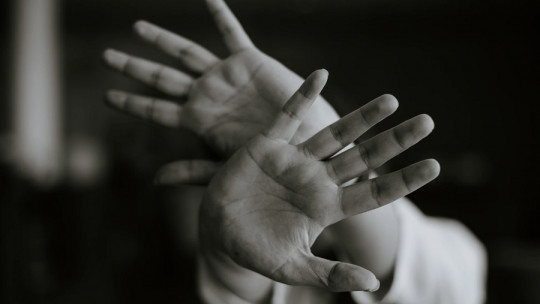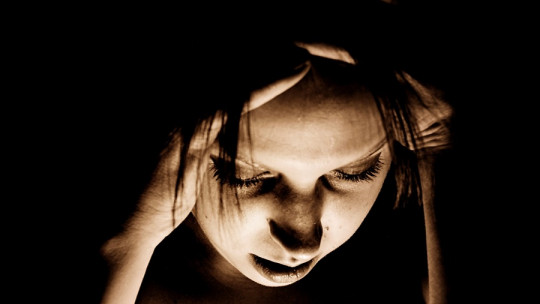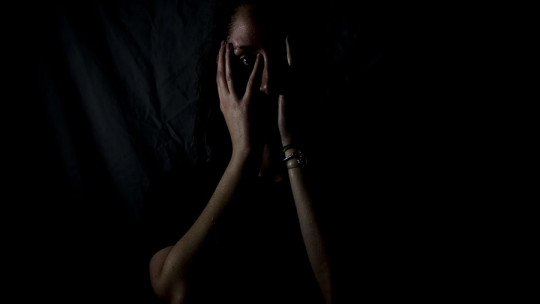Although, currently, the leading cause of death in adults is heart-related problems, the fear of developing any type of cancer is much more widespread throughout the entire population.
One of the main reasons can be found in the fact that cancerous diseases are inevitably associated with an image of extremely high suffering and anguish. This fact has led to the development of a variety of specific phobia known as: carcinophobia
What is carcinophobia?
As we have always specified in articles that describe some type of specific phobia, a normative or habitual fear does not have the same clinical significance as a phobic fear, with numerous and substantial differences existing between the two.
In the specific case of carcinophobia, this is part of the anxiety disorders and consists of experiencing an excessive, irrational and uncontrollable fear of suffering from or developing some type of cancer
This fear of developing a cancer-type disease can be considered a type of specific hypochondria in which the only conditions that the person fears are those that are characterized by the appearance of tumors or carcinomas.
Comparison with other fears
It is necessary to specify that the experience of feelings of fear and fear at the possibility of developing are completely natural. As we mentioned, the fact that this is a disease with such a traumatic and painful development and course (both physically and psychologically) makes each and every case very striking, creating a feeling of omnipresence.
Although it is true that cancer cases have increased drastically in recent years and that most people have experienced a close case, carcinophobia is an exaggerated reaction to this fact, since turns a normal fear into an excessive one with the consequent effects on daily life that this causes.
The phobic fear that characterizes carcinophobia, and all specific anxiety disorders, is distinguished by being absolutely disproportionate and exaggerated, as well as irrational and permanent over time.
Furthermore, in cases of carcinophobia, The person tends to associate any symptom or discomfort experienced with the appearance of some type of cancer thus promoting a state of continuous anxiety and carrying out information-seeking behaviors to reinforce their suspicions.
Finally, compared to other types of phobia in which the anxiety reaction only appears in the presence of a feared stimulus or situation, in carcinophobia it is a constant fear since the fear arises simply from the person’s expectations, feeding a fear that intensifies even more in the presence of any stimulus related to cancer.
What symptoms does it present?
The clinical picture of carcinophobia is similar to that of the rest of specific phobias and its symptoms are related to the experience of serious anxiety states. This anxious symptomatology is classified into three groups of symptoms: physical, cognitive and behavioral.
1. Physical symptoms
Specific anxiety disorders are characterized by causing an increase in the activity of the central nervous system in the person experiencing it. This increase generates a large number of changes and alterations at a physiological and organic level. These symptoms include:
2. Cognitive symptoms
Like the rest of phobias, within the symptoms of carcinophobia there are a series of beliefs or distorted thoughts about the chances of getting or developing any type of cancer
These irrational beliefs enhance the development of this phobia and are distinguished because the person makes a series of illogical associations about the causes, risk factors or symptoms of cancer.
3. Behavioral symptoms
The third group of symptoms are behavioral symptoms, which refer to all the behaviors that the person carries out to avoid (avoidant behaviors) or flee (escape behaviors) from possible situations or agents that may be potentially carcinogenic.
For example, people with carcinophobia They tend to avoid smoking spaces or polluting places in which there may be environmental toxic agents that may cause cancer.
In the same way, these people carry out constant research with the aim of determining which foods or products may be carcinogenic, as well as continually going to the doctor or requesting continuous medical reviews and check-ups.
Is there a treatment?
In those cases in which the worry or fear of developing cancer causes great distress in the person or interferes with the progress of their daily lives, it is highly recommended to seek psychological help.
Once the diagnosis is made, psychological intervention can begin. In the case of phobias, Cognitive-behavioral treatment has turned out to be the most effective system when it comes to reducing and remitting the symptoms of the phobia.
Because the central symptomatology of carcinophobia is related to cognitive aspects. It is advisable to begin treatment through cognitive restructuring, thanks to which irrational beliefs and ideas can be banished and the fear of cancer relativized.
Furthermore, this intervention can be accompanied by systematic desensitization techniques. This technique, accompanied by training in relaxation techniques, allows the person to mentally confront those situations that generate fear and anxiety.
These are just some of the treatments or interventions that a person with carcinophobia can undergo. Besides, It is also advisable to obtain information from an oncology professional in order to avoid myths and false beliefs about cancer.









